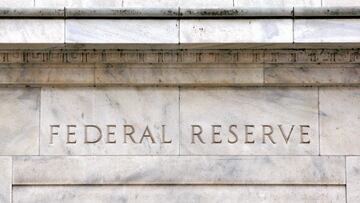US inflation report: How could May CPI affect the Fed meeting this week?
The May CPI report is a critical input for officials at the Federal Reserve as they evaluate whether or not to raise rates in June.


In May, the Consumer Price Index (CPI) tracked an increase in average prices of 0.1 percent, bringing the year-over-over increase to four percent. Sectors that continued to drive inflation included shelter and the market for used cars and trucks. Food prices also rose slightly, but energy commodities saw prices fall last month, which helped to keep the overall increase in the CPI down.
Inflation is shorthand for increases in average prices across the market for commodities, otherwise known as goods and services. While the pace of price growth (i.e., inflation) has slowed in recent months, prices are still increasing, and if wages are not able to keep pace, households will see decreases in their purchasing power. According to the Bureau of Labor Statistics (BLS), inflation has increased by four percent over the last year, and real weekly earnings have fallen by around 0.7 percent.
The importance of the May CPI report to the Federal Reserve
On Wednesday, 14 June, the US central bank’s Federal Open Market Committee (FOMC) will meet to discuss and vote on any changes to monetary policy, including the possibility of implementing an additional rate hike.
Currently, the Federal Funds Rate (FFR) sits at 5.06 percent. As the lender of last resort, the Federal Reserve sets the FRR as a baseline that then other financial institutions that offer loans tack additional interest onto. Higher interest rates make borrowing more expensive, which slows the flow of money through the economy, and from the Fed’s perspective, will bring down inflation.
What sectors are driving inflation?
In May, the cost of “shelter” went up by 0.6%, following a 0.4% increase in April, resulting in an 8% rise in prices compared to the previous year. Rental rates, which increased more quickly than home prices, rose by 0.5% after a 0.6% jump in April. On average, renters paid 8.7% more in May than they did during the same period in the previous year.
In addition to housing, the market for used cars and trucks saw prices rise on average 4.4 percent, which was the same increase seen from March to April. However, looking at the year-over-year change, prices remain down 4.2 percent.
How might the Fed respond?
Given that higher interest rates are not guaranteed to bring down prices in the housing market, the May CPI report may indicate to Fed officials that a pause in rate hikes may be warranted. Part of what is driving up rents and home prices more generally is the fact that there is very little supply. Homeowners who may be interested in putting their homes up for sale may look at higher interest rates and wait until they come down. Additionally, a higher rate environment makes investment in building new units less attractive. Both of these issues could become even more pervasive if interest rates are increased even further.
Additionally, the increases in price seen in the used car and truck market are unlikely to be the result of excessive demand and likely continued supply-related problems. Again, further rate increases cannot address issues on the supply side, only that which relates to demand.
Opposition to further rate increases
The Federal Reserve’s mandate includes keeping inflation under one to two percent. However, some political leaders, such as Senator Elizabeth Warren (MA-D), are concerned that this objective may conflict with the Fed’s other mandate of creating conditions for full employment. Senator Warren argues that if reducing inflation means stripping at least two million workers out of the labor force (which is the Fed’s own projection), those households will be worse off than if inflation remains above two percent, but they still have a job. Citing the historical record, the Senator argued that the Fed does not have a great track record of slowing unemployment once layoffs have begun, and if this time follows those trends, as many as 3.5 million workers could lose their jobs over the next two years.
Related stories
Federal Reserve Chair Jerome Powell justified the position of the Fed, contending that inflation’s greatest victims are low-income families and that any increases in unemployment are an intended consequence.
In addition to political leaders, some economists, like Nobel Prize winner Joseph Stiglitz have also called on the Fed to pause rate increases arguing that they will not be able to address the actual drivers of inflation and could send the economy into a brutal recession. After the collapse of Silicon Valley Bank, Stiglitz writing in Project Syndicate, said that the “worst pain” caused by further rate hikes “would be reserved for members of marginalized and vulnerable groups, like young nonwhite males” whose “unemployment rate is typically four times the national average.” It should be noted that Stiglitz is not an extremist or an anti-establishment thinker. He has received a Nobel Prize, after all. His critique stems from a worry that if the Fed persists in its current course, it could jeopardize the institution’s standing and expose it to significant risks if the cause of inflation has been misjudged and could potentially worsen if interest rates are raised further.